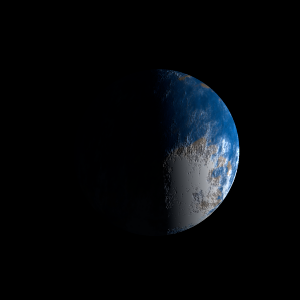|
|
Space Astro
|
Info for exoplanet "Cuve"
| Scientific (actual) data |
|---|
| Name | K2-14 b |
| Planet status | Confirmed |
| Radius | 0.429 |
| Orbital period | 8.36802 |
| Semi major axis | 0.0627 |
| Discovered | 2015 |
| Updated | 2021-02-05 |
| Tconj | 2456810 |
| Temperature (kelvin) | 488 |
| Publication | Published in a refereed paper |
| Detection type | Primary Transit |
| Radius measurement type | Primary Transit |
| Alternate names | EPIC 201635569 b, 2MASS J11521368+0235390 b, EPIC 201635569.01, WISE J115213.65+023538.9 b |
| Star name | K2-14 |
| Right ascension | 178.06° |
| Declination | 2.59° |
| Mag j | 13.416 |
| Mag h | 12.772 |
| Star distance | 367.72 |
| Star metallicity | -0.37 |
| Star mass | 0.47 |
| Star radius | 0.45 |
| Star sp type | M0 |
| Star temperature | 3789 |
| Star alternate names | EPIC 201635569, 2MASS J11521368+0235390, WISE J115213.65+023538.9 |
| Wikipedia article | K2-14 b |
Back
| |
| Fictional info (?) |
|---|
| Suggested name | Cuve |
| Planet type | Warm planet |
| problematic trip. |
| Atmosphere | Water vapor | 87% |
| Hydrogen | 13% |
| Argon | 1.5E-5% |
| Atmospheric pressure | 0.6 bar |
 |
| No known satellites |
| Google search for Cuve |
|
Website by Joachim Michaelis
|
|
|
|